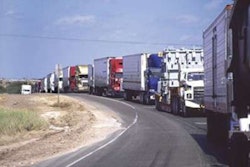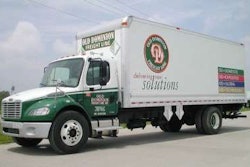Strength in numbers

At the time, 2007 and much of 2008 seemed like bad times in trucking, but they were great compared to 2009. All the key metrics turned sharply negative in the summer of 2008. Inventories relative to sales skyrocketed. Manufacturing activity contracted. Housing starts continued their prolonged slide. The ongoing decline in jobs accelerated. And freight indices plummeted. All of this started happening even before the severe shock to the financial markets that occurred in September 2008.
Each of these economic indicators appeared to bottom out by the end of the first quarter of this year, but the key drivers of trucking activity aren’t recovering as quickly as they declined. Employment is sluggish, having suffered a big drop after a big surge as a result of temporary Census jobs. Housing starts still are bouncing around the bottom. The Institute of Supply Management’s index of manufacturing activity remains strong, though growth is slowing.
And at least through June, freight demand seemed to be improving. Year over year, most publicly traded trucking companies did post strong revenue gains in the second quarter, although the base was so low that in many cases the absolute freight volume remained fairly unimpressive. Also, fuel surcharge revenues typically were sharply higher due to higher diesel prices.
So an economic recovery might be slow and choppy, but a true “double-dip” recession is unlikely, according to two noted transportation analysts who spoke last month at the Commercial Vehicle Outlook Conference in Dallas. More likely than a double dip is a “growth recession” – a softening of the rebound, argued Eric Starks, president of freight forecasting firm FTR Associates. Trucking won’t recover due to freight demand alone, Starks says. “We are going to have to see some heavy-duty growth just to get us back to where we were a few years ago.” But capacity is very tight, and carriers won’t be able to grow quickly anyway because of constraints on the supply of drivers, he contends.
Tight capacity should offset choppy demand growth.
Even with high unemployment and the tens of thousands of drivers lost in the past three years, Starks predicts “an unprecedented driver shortage” over the next couple of years because recruiting and training pipelines were decimated during the downturn and the Federal Motor Carrier Safety Administration’s Comprehensive Safety Analysis 2010 (CSA 2010) will squeeze the supply of qualified drivers.
Donald Broughton’s analysis generally tracks with Starks’, although he doubts CSA 2010 will have quite the impact Starks sees. “Predicted catastrophes seldom occur,” says Broughton, managing director and senior transportation analyst for Avondale Partners. But Broughton agrees that a double-dip recession is highly unlikely. For example, he dismisses arguments that recent declines in the stock market point to a double dip. “The market has predicted 10 of the last two recessions,” he quipped in his remarks to conference attendees.
Based on key indicators such as air freight volumes and chemical shipments, just to name a few, Broughton sees no double-dip recession, though recovery could be slow. He also thinks that capacity will lag demand for a while. Broughton compared the most recent trucking downturn with the slump early last decade. In the earlier recession, about 11 percent of capacity was lost due to trucking failures, he notes. But surviving carriers actually grew, resulting in a net capacity loss of only about 7 percent. This time, the capacity lost due to failures was 12 percent, but the remaining trucking companies also reduced their fleet size. So the net capacity loss was greater than 15 percent, Broughton says.
Some bumpiness remains due to weakness in employment and construction, but the worst seems to be over for the trucking industry in general. The story could be different for individual carriers, however. More utilization might generate revenue, but it consumes cash in the near term. Some carriers might face a cash squeeze, especially since credit remains very tight. So here comes the next challenge: Managing the recovery. n
Avery Vise is Editorial Director of Commercial Carrier Journal.
E-mail [email protected].










